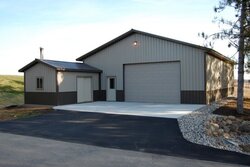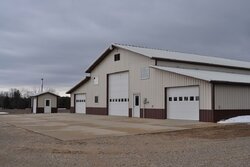Hi All,
I’m new to the forum but have been reading a lot of other people’s posts. Im getting ready to purchase a OWS and would like some feedback on the setup from the gurus to make sure I don’t make any costly mistakes.
Our house is about 2500sqft, has a 2 car garage and a half finished basement with baseboard heating on a 4 zone oil fired furnace.
House built in 1993, relatively well insulated, but drafty.
I have plans to add a 1500sqft work shop about 100 feet from the house so ideally I would setup the OWS in between the house and proposed work shop so I can heat it later on.
So the OWS would be about 50 feet from the house, lines running underground to the basement. There I would install a 70 plate water to water heat exchanger to keep the closed baseboard system separate and a 50 plate HX to use for hot water.
Can I setup a thermostatic valve to switch between the two systems?
If the water from the OWS is below a certain temperature, power to the furnace would turn on allowing the furnace to fill the heat call.
The OWS would be about 6 – 8 feet higher (and 50 yards further) than the furnace. Would this pose a problem and can it be remedied?
Whats a good place to buy heat exchangers from? Any brand recommendations?
Does anyone have experience getting permits in CT for a OWS? I plan to get one that’s EPA approved to avoid issues down the road.
The goal is to buy the OWS, set it up in the back yard (which would be about 10-15 feet from the house, is that ok with the smoke?) to save money on fuel this year. Next year I will level the rest of the land to start building the workshop and the permanent location of the OWS.
Thoughts, comments and suggestions would be appreciated.
Thanks,
george
I’m new to the forum but have been reading a lot of other people’s posts. Im getting ready to purchase a OWS and would like some feedback on the setup from the gurus to make sure I don’t make any costly mistakes.
Our house is about 2500sqft, has a 2 car garage and a half finished basement with baseboard heating on a 4 zone oil fired furnace.
House built in 1993, relatively well insulated, but drafty.
I have plans to add a 1500sqft work shop about 100 feet from the house so ideally I would setup the OWS in between the house and proposed work shop so I can heat it later on.
So the OWS would be about 50 feet from the house, lines running underground to the basement. There I would install a 70 plate water to water heat exchanger to keep the closed baseboard system separate and a 50 plate HX to use for hot water.
Can I setup a thermostatic valve to switch between the two systems?
If the water from the OWS is below a certain temperature, power to the furnace would turn on allowing the furnace to fill the heat call.
The OWS would be about 6 – 8 feet higher (and 50 yards further) than the furnace. Would this pose a problem and can it be remedied?
Whats a good place to buy heat exchangers from? Any brand recommendations?
Does anyone have experience getting permits in CT for a OWS? I plan to get one that’s EPA approved to avoid issues down the road.
The goal is to buy the OWS, set it up in the back yard (which would be about 10-15 feet from the house, is that ok with the smoke?) to save money on fuel this year. Next year I will level the rest of the land to start building the workshop and the permanent location of the OWS.
Thoughts, comments and suggestions would be appreciated.
Thanks,
george



